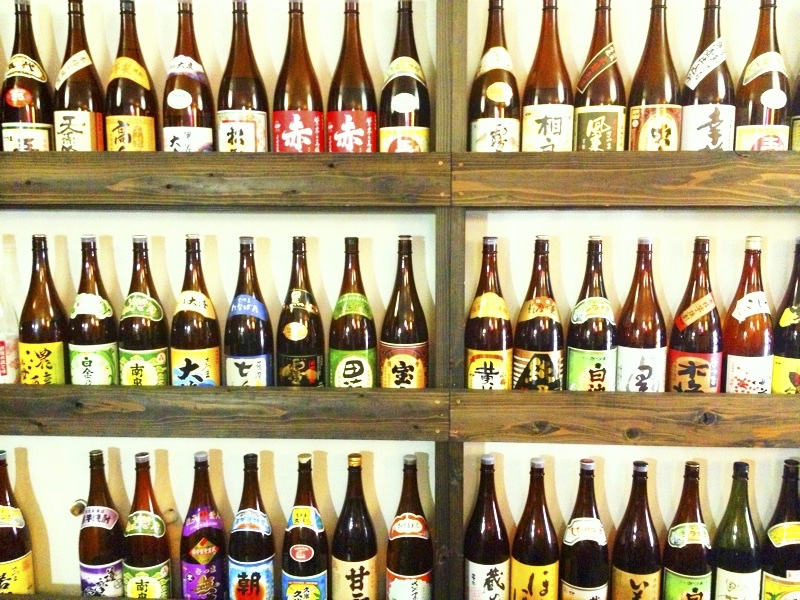Let me tell you, I’ve been mulling over how to put this blog together for over a year now and have yet to write a single word. And now that I’m finally getting round to writing it, I’m at a stage in my life where I’m drinking less and less.
Don’t get me wrong. I still like a good stiff drink. It’s just that I’m finding that I’m starting to enjoy a good night’s sleep even more. Go ahead, call me an old man. I won’t hold it against you.
Today marks a happy milestone of sorts in my life. As of this afternoon I am no longer an employee of the Ministry of Education, Culture, Sports, Sciences and Technology (What a mouthful!), having resigned from my part-time teaching position at the Kyûshû Institute of Technology. (KIT, Kyūkōdai)
The six years I spent at KIT (I’m practically a grad student) were not always happy ones. The ninety-minute commute by bus, the ghost town the school is located in, the uninspiring campus, the sullen full-time teaching staff, and the miserable students all contributed to making Wednesdays and Thursdays the two most dreaded days of my workweek.
Adi drinks water as if it were 80 proof.
This past year, however, has easily been the most pleasant, or should I say, least unpleasant of my tenure at the university. Instead of the usual required freshman courses, I was given a slew of elective classes to teach. Elective classes, while involving more effort on the behalf of the instructor (class size is sometimes three times bigger), offer a lot of freedom in how the class is taught and who may take part in the class. So, instead of twenty to thirty self-conscious freshmen, most of whom are 18-year-old boys, you get a group of fifty to sixty boisterous sophomores and juniors, a fair portion of whom are coeds. Let me tell you, the atmosphere is like night and day.
This year, I was also fortunate enough to have a Nepali in my class. Adi was the antithesis of the typical Kyūkōdai student. Funny, gregarious, flirtatious, curious, and fairly well-traveled, he became the mood-maker of the four classes he attended this year. I so took a liking to the young man that I even invited him to hunt for girls in my classes at another university I was teaching at which has a more favorably apportioned student body.
As the second semester was nearing its end, Adi came up to me after class one day and said, “In my country it’s common to give your teacher a present.” And, he handed me a bottle of Kumesen Awamori. When I got home, I immediately opened the bottle and poured myself a glass over ice.
Normally, I don’t drink much awamori in the wintertime, preferring to drink shōchū mixed with hot water or hot saké (atsukan), instead. Oh, I might have a few glasses if I’m at an Okinawan restaurant, but the potent clear liquor has always been a summer drink for me.
The first time I had awamori was on my first visit to the island of Okinawa ten years or so ago. My girlfriend at the time and I had checked into a hotel and were waiting in the lounge where we were served “welcome drinks”. Ordering “something local”, the waiter presently brought me a glass of awamori served in Ryūkyū glass. As I looked out at the clear blue sea just beyond the coral beach I took a sip of the drink and my mouth filled with that distinctive awamori fragrance, unlike anything I had ever drunk before. I was hooked.
The gift Adi gave me took me back, as so many glasses of good awamori do, to that hotel on the quiet northern reaches of the Okinawan mainland and all the tension melted like the ice in the glass.
Shortly after our final class, Adi wrote the following on my Facebook wall: “Thanks for those great classes. It was a wonderful year. At last, there are some teachers who teach life rather than morals and equations. Thanks for everything.”
“Thank you, Adi,” I said, raising my glass towards that miserable town, Iizuka. “Thank you. Thank you. Thank you.”
久米仙
Kumesen Black
久米仙 ブラック
Kumesen Burakku
Produced by Kumejima’s Kumesen Co., Ltd. located in Uegusuku Kumejima-chõ, Shimajiri-gun, Okinawa. Kumejima, which lies due west of the Okinawan mainland, is about thirty minutes’ flight from Naha. It has a population of roughly 7,600. Kumejima’s Kumesen Co., Ltd. has been in business since 1949.
Awamori, Japan’s oldest distilled liquor, is made from long-grain indica rice imported from Thailand, what the Japanese call tai mai, and black kōji, a fermentation starter prepared from rice. The distillation technique was introduced to the Ryūkyū Kingdom, modern-day Okinawa, through trade with China and Southeast Asia in the early 15th century.
The longer the maturation, the deeper the tastes and fragrance of awamori, and “Kūsu” (古酒, literally “old liquor”) refers to awamori aged for three to ten years.
Unlike saké, which is made with yellow kōji, awamori is made with black kōji which grows throughout the year in the subtropics, allowing awamori to be produced year-round. Black kōji also produces a lot of citric acid which prevents the souring of the moromi (醪), or the main mash mixture in the brewing process.
Kumesen Black, aged for seven years, contains 43% alcohol by content.
A word about dialects, or hōgen. Rather than say kampai (乾杯, lit. “dry cup”, i.e. “bottoms up”) as most people do in Japan before drinking, the Okinawans say “Karii!” This can be written in katakana as カリー! or in kanji as 嘉利! Karii is used on celebratory occasions and has the same meaning as medetai (めでたい, “joyful, auspicious”) or sachi ōkare (幸多かれ, “May there be many blessings”).
In Naichi, or mainland Japan, it is often the custom to refrain from drinking at a party until everyone has his or her drink or until the toast has been given, but in Okinawa they don’t bother to wait.
Oh, before I forget, Adi. You get an A+. Karii!
Kampai is available in paperback and ebook for at Amazon.
I wrote the above in the winter of 2011, only 8 years ago, but it seems like a lifetime. So much has changed since. Originally, I was leaving KIT to work part-time at two other women’s colleges closer to home, but was then offered a full-time position at one of colleges. I would spend the next seven years there—seven pretty good years, I should add—before I was suddenly let go. This caused quite a bit of soul searching, as you might imagine, but things worked out in the end. That first year being freelance again was one of the best. Money was tight, but I had a lot of time to spend with my boys, and was able to take my family to the States for a month-long holiday which was the best.
In the meantime, Adi moved to the US where he is currently in California working on his PhD. He, too, became a father about two years ago.















